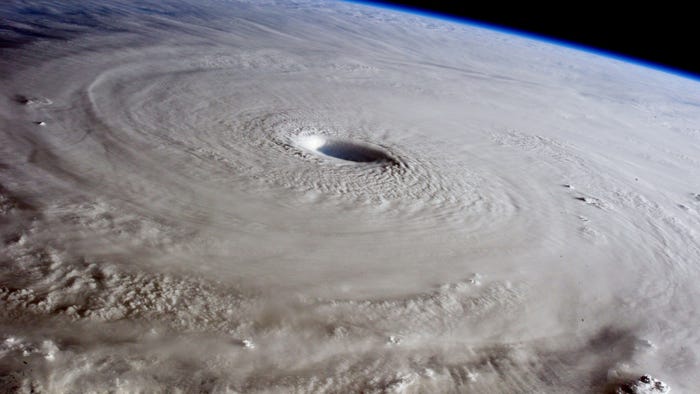ZeroEyes earns key DHS designation, reducing legal liability for customersZeroEyes earns key DHS designation, reducing legal liability for customers
ZeroEyes recently announced that its gun-detection offering—an artificial intelligence (AI)-based video analytics platform—has earned full SAFETY Act designation from the U.S. Department of Homeland Security, which eliminates third-party liability for ZeroEyes customers to claims made from acts of terrorism.

ZeroEyes recently announced that its gun-detection offering—an artificial intelligence (AI)-based video analytics platform—has earned full SAFETY Act designation from the U.S. Department of Homeland Security, which eliminates third-party liability for ZeroEyes customers to claims made from acts of terrorism.
ZeroEyes co-founder Sam Alaimo explained the legal and financial significance of the company’s new DHS designation to customers deploying the gun-detection platform, which works with most existing digital cameras on the market that provide video at a resolution of at least 720p.
“It limits the liability for companies—or clients, schools or whatever—if there’s some sort of act related to terrorism,” Alaimo said during an interview with IWCE’s Urgent Communications. “For example, if there is a school shooting that is a terrorist incident—or in a supermarket, a mall or a military base—whatever claims are levied against the institution will basically be protected and backed up by the SAFETY Act by the Department of Homeland Security.”
ZeroEyes has been subjected to testing for more than a year by DHS to earn the full SAFETY Act designation, according to Alaimo, who believes the recognition can help persuade potential organizations and enterprises to consider the gun-detection solution, even if they were not familiar with ZeroEyes previously.
“When we come to them with the SAFETY Act designation and it’s proven that we have that legal-liability protection, that goes above and beyond toward making them confident that we are what we say we are and we can do what we say we can do,” Alaimo said.
ZeroEyes CEO and co-founder Mike Lahiff echoed this sentiment.
“The process of receiving this designation required us to demonstrate several years of pressure testing to DHS to ensure that our technology is sound, reliable and delivers what we promise,” Lahiff said in a prepared statement. “As a result, we now provide significant value in liability protection, especially to our commercial enterprise customers, including stadiums, shopping malls, and third-party logistics companies.”
ZeroEyes worked with consultant Dave McWhorter—founder and CEO of The Homeland Security Consulting Group and former Deputy Project Leader on DHS’ SAFETY Act program—to secure the full SAFETY Act designation, according to a ZeroEyes press release.
“It has been an honor working with the ZeroEyes team to ensure that its pioneering technology is the first AI-based gun detection solution to be recognized by the U.S. Department of Homeland Security as an effective anti-terrorism technology,” McWhorter said in a prepared statement. “This designation is a testament to the platform’s reliability and efficacy, measured through rigorous testing, evaluation, and real-life events.”
ZeroEyes’ software typically is layered on existing digital security cameras to identify an illegally brandished gun—an image that immediately is shared with U.S. military and law-enforcement veterans at one of the ZeroEyes Operations Centers (ZOCs). These personnel decide whether the threat is credible; if so, they inform appropriate law enforcement and personnel at the facility—be it a school, an enterprise or other entity—of the suspect’s description, the gun type and the last known location as quickly as possible.
Alaimo said this approach can provide an opportunity for a potential shooter to be identified and neutralized before firing shots.
“The way it works is that a gun comes out of a bag, AI says, ‘It’s a gun,’ a human confirms that it’s a gun, the client receives it and gets a still-frame image of the shooter, with the exact location—grids and coordinates—a timestamp and the exact sort of weapon the individual was carrying,” Alaimo said.
“That way, law enforcement can show up, not have to figure out where the shooter is, not have to sift through a hundred conflicting calls to 911, and drive directly to where the shooter is on a 20-acre campus in order to stop that threat.”
Alerting law enforcement and key personnel at the scene of a gun threat with specific, actionable information is important in such critical situations, Alaimo said.
“Within three to five seconds of that gun being exposed, we’ll have an alert in their hands—that’s the standard we try to meet,” Alaimo said.” That’s necessary. If it was 10 seconds or more, … it would still be extremely powerful, but there are probably some circumstances where that 10 seconds means life and death. Three to five seconds is realistic to make sure that we’re verifying it—so they’re not getting inundated with false positives—and when they get it, they can do something about it in time.
“We want to make sure that when they get there [to a scene], they don’t have to hold and figure out what’s going on. They can get right there and do what they do best, which is (1) stop the killing and (2) stop the dying.”





